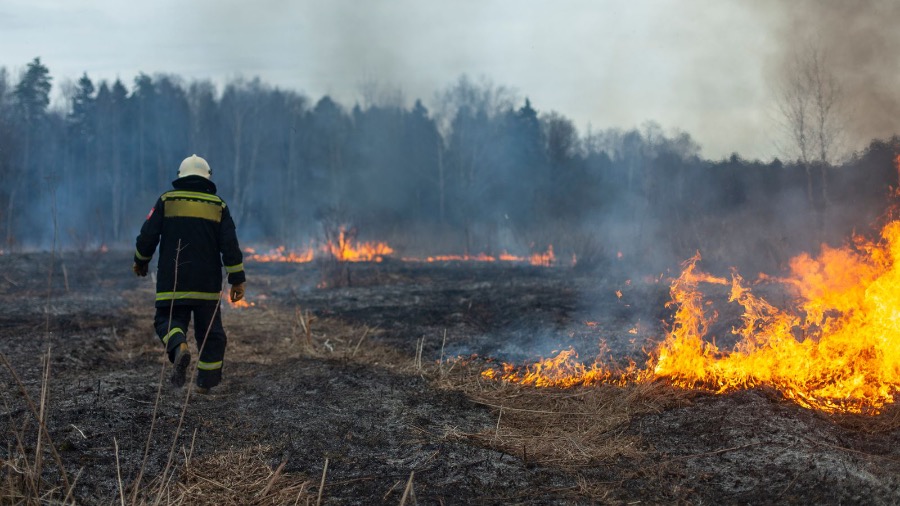
Oakland, California, is testing a new, high-tech approach to protect residents from wildfires — 10 sensors, strategically located in areas where human development meets wilderness, that can detect fires and immediately notify the city’s fire department.
“Just like we have commercial and residential fire alarms that notify dispatch, whether it be directly or through third parties, these sensors do the exact same thing,” Oakland Fire Chief Reginald Freeman said in a video posted on Twitter last week, a day after a press conference announcing the two-year pilot program.
The Oakland initiative is one piece of a larger effort by the Department of Homeland Security’s Science and Technology Directorate to determine how environmental sensors can help prepare first-responder communities nationwide for climate and natural disasters, said Jeff Booth, director of the directorate’s Sensors and Platforms Technology Center, in an interview.
The directorate, which is DHS’ research and development arm, has been researching and deploying flood sensors for about five years, but “wildland fire sensors are relatively new,” Booth said.
While many fire sensors rely on cameras, these new sensors detect fires by collecting information on levels of gases such as carbon monoxide, carbon dioxide, nitrous oxide and particulates, he explained.
By combining artificial intelligence with this information on gas and particulate levels, the sensors can “identify the early ignition phases, smoldering, before a real blaze begins,” Booth said. “We’re trying to get as close to that point as possible, as opposed to just reporting on a wildfire that may already be out of control.”
In simpler terms, the devices are “smelling sensors,” Freeman said in the Twitter video. “There is absolutely no audio or visual technology in these sensors to ensure that our privacy for our residents is not compromised,” he said.
The Oakland fire chief said in the video that he first heard about the sensors at a conference last year in Germany when he stopped to check out a booth run by DHS’ Science and Technology Directorate. “Obviously, I had to make a pitch for the city of Oakland,” Freeman said in the video. Two months later, Oakland was given a spot in the pilot program at zero cost to the city, he said.
Oakland is the first city partner in the project to mount the sensors on its own light and infrastructure poles, making it simpler for workers to access the devices if they “become inoperable or have a malfunction,” said Michael Hunt, the Oakland Fire Department’s chief of staff, in an email. “We can get them down, repaired and back up in short order, rather than contracting out that task,” Hunt said.
Beyond Oakland, the DHS directorate has deployed the fire detection sensors in Oregon, Washington, Colorado, Virginia, Canada and Germany, Booth said. The team has also tested the sensors during prescribed burns to improve the technology further.
It is important for the sensors to be as accurate as possible because “false positives are a real concern,” Booth said. The California Department of Forestry and Fire Protection, for example, “has told us that they don’t have the resources to deploy to every false alarm.” Questions also remain regarding how far apart to place the sensors, which determines the cost of deployment, Booth said.
While city resources are always limited, Booth noted that the Federal Emergency Management Agency now allows communities to use its Hazard Mitigation Grant Program funds on environmental sensors. “It’s not just fire sensors, it could be flood sensors, earthquake sensors, those types of natural hazards,” he said.
For the fire sensors in the pilot program, the directorate aims to do more than help develop the technology, Booth said — it wants to make it “commercially viable.”
“Is it something that the government can deploy? Is it something that industry could deploy, like the power industry?” Booth said. “Is it something insurance would be interested in subsidizing for not only jurisdictions, but individual homeowners?”
The sensors won’t be a silver bullet for addressing wildfire threats, but rather one of the many tools in firefighters’ toolboxes, Booth said. He imagined a world in five to 10 years where the sensors could be integrated into residents’ home protection systems.
“We can start to get this mesh of sensors out there reporting on not just ambient air quality, but the event of an ignition,” he said. “As the technology becomes more effective, more efficient, we can start to look at broader community distribution capabilities, dissemination, operations and maintenance.”